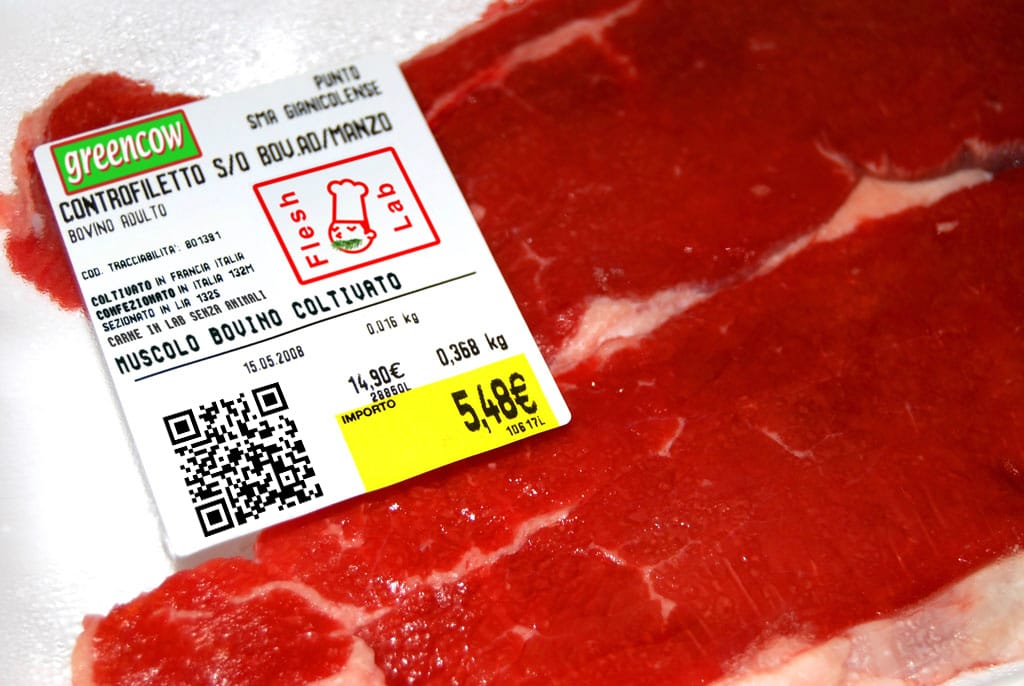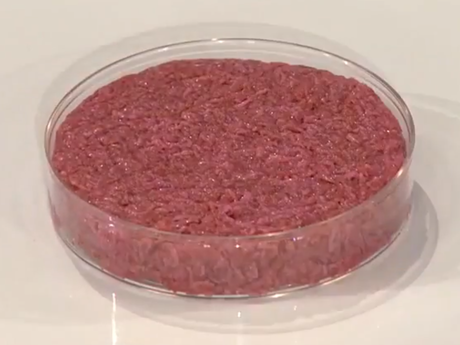The Food of the Future...
...Has Shrivelled Up and Died (If It Was Ever Actually Born).

Nothing in Joe Fassler's long-read essay in last Sunday's New York Times, "The Revolution That Died on Its Way to Dinner," surprised me. Not to say that it wasn't interesting, well-researched, and full of telling detail.
But at the end of almost every paragraph, I registered an inner voice muttering: "Well, duh."
Fassler digs deep into the subject of cultivated meat and seafood, which is also known as lab-grown meat (known in some circles as "Frankenfood," though apparently that term can be divisive). He lays out the promise:
"A world in which meat is abundant and affordable with almost no cost to the environment. Animal slaughter is forgotten. Global warming is restrained. At the heart of the vision is a high-tech factory housing steel tanks as tall as apartment buildings and conveyor belts rolling out fully formed steaks, millions of pounds a day — enough, astonishingly, to feed an entire nation."
This is what venture capitalists used to sell the idea of lab-cultivated meat and seafood. In the five years up to 2022, investors were convinced to pour $3 billion into this industry. The goal was to produce a chunk of simulated bluefin tuna you couldn't distinguish from sushi-grade 0-toro, or perfectly marbled ersatz beef that even the most carnivorous gourmet would swear was Wagyu. What went in was "pumped-in oxygen and a rich soup of amino acids and sugar" (and loads of cash); what came out was a viscous mass of "cell slurry" that had to be combined with plant protein, lots of plant protein, to make it halfway presentable. At its best, it was barely palatable. Fassler memorably describes being served a $10,000-plate of simulated chicken by one of these start-ups' chefs:
"the experience was closer to eating tofu or seitan than chicken, which makes sense since it’s filled with plant protein. It would never satisfy a hard-core meat eater, which, after all, was the point. So what was all this effort for?"
Indeed.

Companies like Upside (California), Eat Just (Singapore), and Vow (Australia), were selling a classic techno-mirage. Who bought it? Novelty-crazed headline writers at The Guardian ("No-kill, lab-grown meat to go on sale for the first time"); Richard Branson; and hype artists who crowed that humanity was on the brink of a "second domestication."
The goals—putting an end to the animal and human cruelty, waste, and environmental degradation brought on by the industrial meat production system—were laudable. The end-product—toothsome meat indistinguishable from the real thing—was tantalizing. The reality was nothing close to anything you'd really enjoy swallowing, let alone relying on for the bulk of your calories.
It is maddening to me that people are duped by this. I was born at precisely the right time to see iterations of these technological cure-alls being sold to people desperate for solutions to ecological dilemmas, and too many of them snapping at the bait. (Maybe it's the fact that Soylent Green, the movie based on Harry Harrison's book "Make Room, Make Room" came out when I was in my formative years, that left me with a lasting suspicion that the promised food of the future would actually be made of something really, really nasty.) It's been going on for decades, now generations. And, as the global population seems headed for 9.8 billion by mid-century, it seems to me that this solutionism is manifesting a palpably desperate edge.
What is chilling is that certain environmentalists, some of whom style themselves as "eco-modernists," are still falling for this time-worn shill. The Guardian environmental journalist and activist George Monbiot is a proponent of lab-grown protein: in his unfortunately titled documentary Apocalypse Cow!, he made a case for eliminating agriculture, rewilding former farmlands, and feeding the urbanized masses by flying up to Helsinki, where lab-coated technicians fed him protein pancakes. Apparently these were synthesized from electricity (massive, massive amounts of electricity, it turns out), bacteria, and thin air. He professed to find them "lovely."
To be clear, this wasn't cultured meat. (Nor is it the same thing as an Impossible Burger, which is made with, gulp, fermented heme proteins.) But the basic idea is the same: technology will solve our apparently intractable caloric challenges. And all it's going to take is wads of venture capital, a bit more energy—the eco-modernists tell us it will be some soon-to-appear, lower-cost form of nuclear—and, with the help of a few credulous media types ("Here, have a bite, for free!"), there will be no more CAFOs, manure ponds, or slaughterhouses.

I see the same story playing out in another realm: the world of public transportation (which I write about over at www.straphanger.blog ). There, we're told that driverless cars and Robotaxis will soon replace buses, streetcars, and subways, and the Hyperloop will take the place of intercity trains. The promise of just-over-the-horizon autonomous vehicles means that the unglamorous work of building and maintaining functioning city bus networks doesn't get done; and in my opinion, the mirage of the Hyperloop has contributed to the fact that the US and Canada have virtually no high-speed rail (apart from a few hundred miles of Acela track). In his book Autonorama, transportation scholar Peter Norton memorably documents how these techno-promises have been just 5, 10, or 20 years away since at least the 1940s.
Constantly staring at techno-mirages keeps us stuck in the desert.
Why do people fall for the illusion? Because the real-life alternatives are hard work. When it comes to food, we'll all have to stop eating so much meat, and be very careful about the seafood we consume. (I wrote a book called Bottomfeeder that offers some tools those who strive to be ethical seafood consumers.) Reimagining agriculture does take a lot of imagination, but there are paths to sustainability. Most of them lie in the past rather than the future: they include no-till agriculture, mixed-species farms, indigenous techniques of soil replenishment (terra preta, chinampas, controlled burns), and traditional forms of irrigation, from Persian qanats to African furrow irrigation. These systems actually involve more people on the land, as opposed to slotting in robots and drones, and crowding the masses into nuclear-powered cities.
Why, in this day and age, do some people insist on farming? It's certainly rarely profitable. For some, it is pure subsistence. (Nothing wrong with that.) But many do it because they are pursuing an age-0ld dream: of attaining self-sufficiency, and maybe providing some of their surplus production to nourish others. And they do it because, in spite of all the obstacles, it can be a very fulfilling existence.
They also do it because a farmhouse cheese, a free-range egg, and, yes, bacon from a pig that's lived a healthy, outdoor life—food produced by a complete farm system, one where the soil and water are healthy—is delicious. Which, in spite of the billions burned in beakers over Bunsen burners, cultivated meat—and, I dare say, Finnish protein pancakes—most definitely are not.
